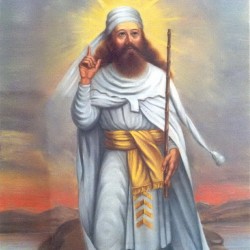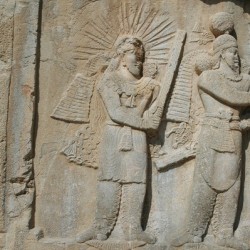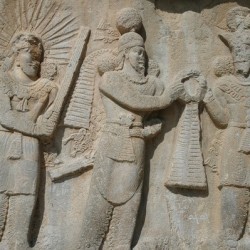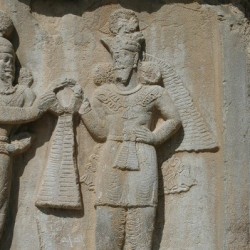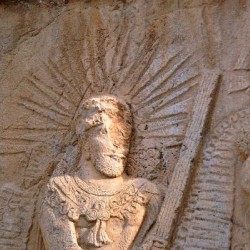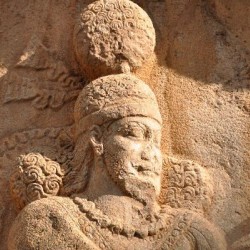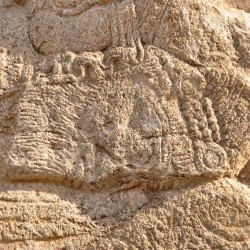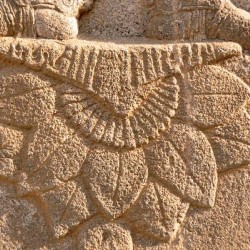Taq-e Bostan, Relief
Q70787076Taq-e Bostan ("the arch of the garden"): site of several Sasanian rock reliefs, on the northeastern outskirts of modern Kermanshah.
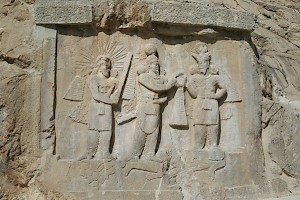
The relief at Taq-e Bostan shows the investiture of Shapur II (r.309-379). This is a common representation of royal power: the supreme god Ahuramazda gives the king a cydaris ring and a diadem.
The king is standing on top of a defeated enemy, a bearded man who can be identified with the Roman emperor Julian the Apostate, who had been defeated by Shapur in 363 and was killed in action. (This is, of course, the terminus post quem of this monument.)
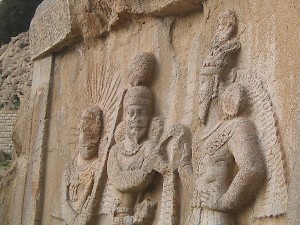
The war ended with a treaty in which Julian's successor Jovian abandoned Roman possessions east of the river Tigris. The Iranian god responsible for treaties, Mithra, is also shown at Taq-e Bostan, holding a barsom, a sacred bundle of twigs used by religious rituals.
Some scholars have argued that the Sasanian ruler who is represented at the relief of Taq-e Bostan is not Shapur II, but his successor Ardašir III (r.379-383). This view, however, must be incorrect; the crown of the ruler represented at this relief is Shapur's, not Ardašir's. Besides, the emperor underneath the Sasanian king's feet can only be Julian. Ardašir's contemporary Theodosius I the Great had no beard and never waged war against Persia.
It may be interesting to know that the representation of Mithra at Taq-e Bostan was used as a source of inspiration by the anonymous artist who made a popular painting of Zarathustra, the Bactrian prophet of Zoroastrianism.
Literature
- Louis Vanden Berghe, Reliefs rupestres de l' Iran ancien (1983 Brussels), #79.
